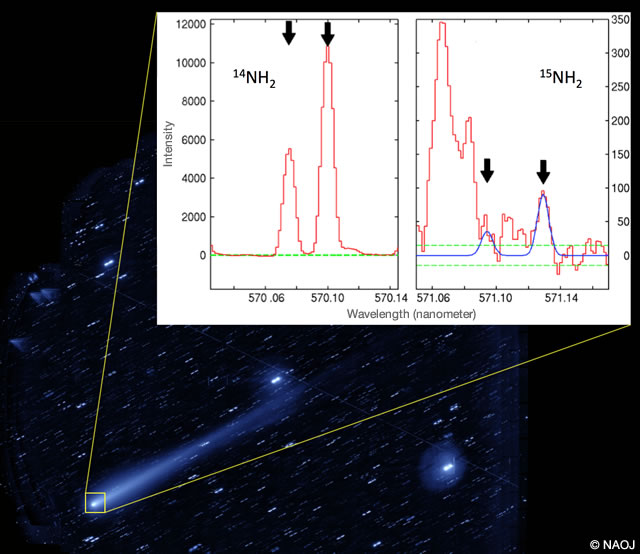Subaru Telescope Detects Rare Form of Nitrogen in Comet ISON
| Science
A team of astronomers, led by researchers of Kyoto Sangyo University, successfully observed the Comet ISON during its bright outburst in the middle of November 2013. Subaru Telescope’s High Dispersion Spectrograph (HDS) detected two forms of nitrogen--14NH2 and 15NH2--in the comet. This is the first time that astronomers have reported a clear detection of the relatively rare isotope 15NH2 in a single comet and also measured the relative abundance of two different forms of nitrogen (“nitrogen isotopic ratio”) of cometary ammonia (NH3). Their results support the hypothesis that there were two distinct reservoirs of nitrogen the massive, dense cloud (“solar nebula”) from which our Solar System may have formed and evolved.

The scientific paper on which this article is based appears in the Astrophysical Journal Letters published on Feb. 20, 2014.
14NH2/15NH2 RATIO IN COMET C/2012 S1 (ISON) OBSERVED DURING ITS OUTBURST IN 2013 NOVEMBERM